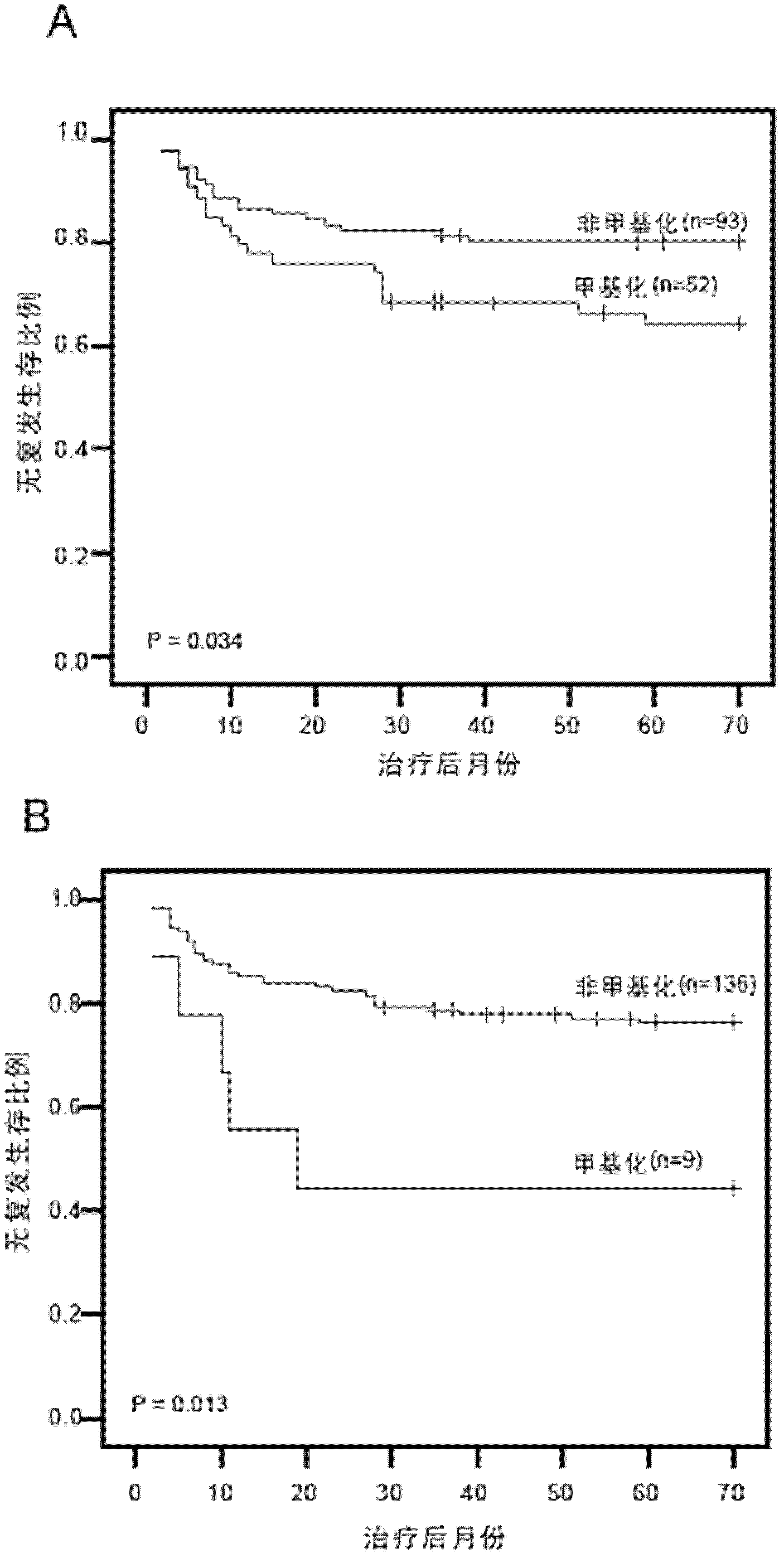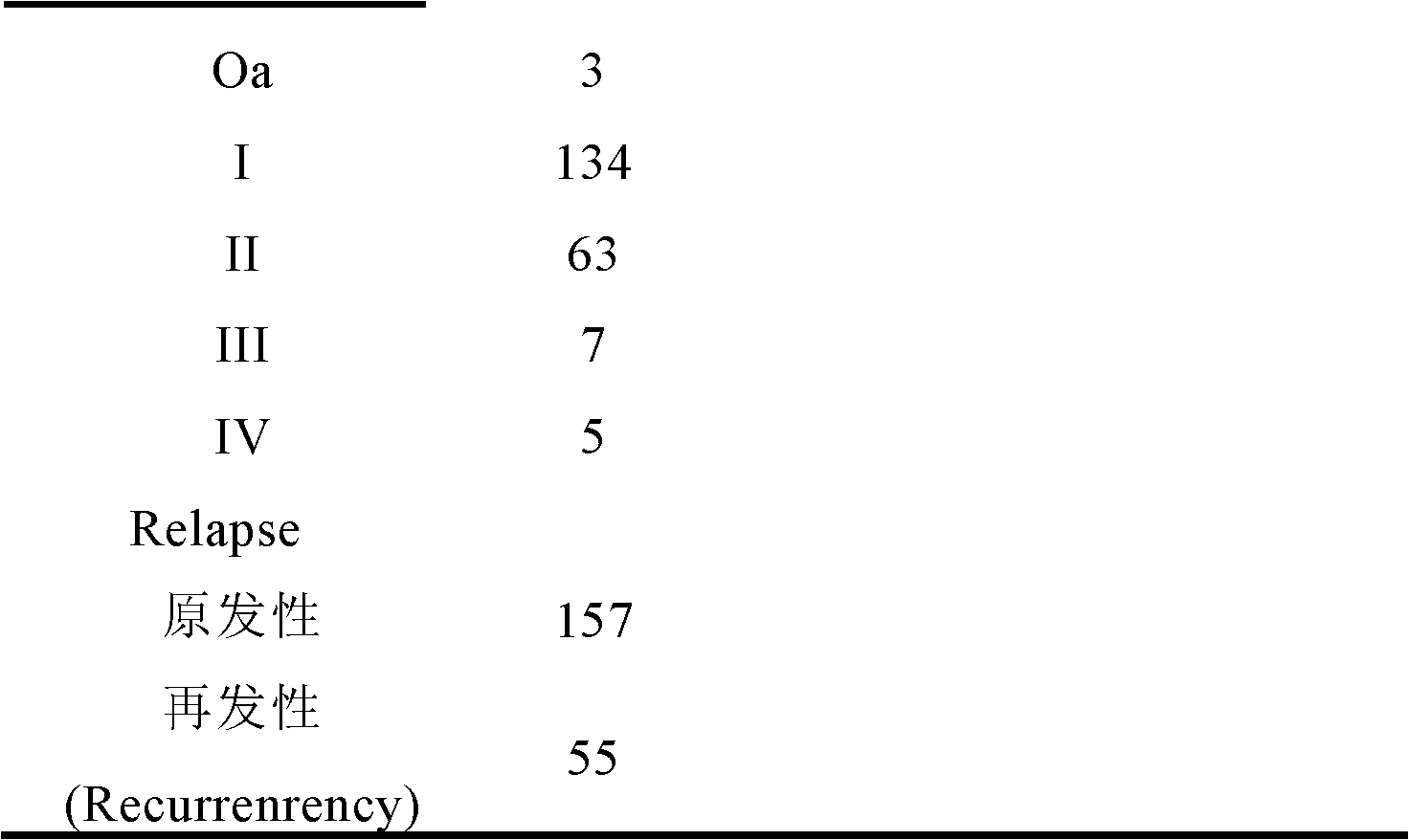Urine-based method and kit for diagnosing relapse risk of bladder cancer patient
A bladder cancer and risk technology, applied in the field of biomedical detection, can solve the problems of high operator's technical dependence, low detection rate of urine exfoliated cells morphological examination, and high price.
- Summary
- Abstract
- Description
- Claims
- Application Information
AI Technical Summary
Problems solved by technology
Method used
Image
Examples
Embodiment 1
[0075] Example 1. Establishment of high-throughput methylation profiles of bladder cancer cell lines and normal bladder mucosa at the genome level
[0076] The present invention conducts high-throughput genomic analysis on two cases of normal human bladder mucosa (obtained from Urology Department of Zhongshan Hospital) and two cases of bladder cancer cell lines (5637 (ATCC: HTB-9), T24 (ATCC-4)). Establishment of methylation profiles.
[0077] Step 1: Extract the DNA of the above-mentioned bladder cancer cells and normal tissues, and use the MBD (methylation binding protein domain) affinity chromatography column to enrich the high, medium and low methylated DNA fragments step by step; Step 2: To collect The highly methylated DNA fragments were added with SOLEXA adapters and sent to Shanghai Bohao Biotechnology Co., Ltd. for SOLEXA high-throughput sequencing. The bladder cancer tumor cell group and the normal bladder tissue group obtained 3 million reads respectively. After bi...
Embodiment 2
[0078] Example 2. Determination of the methylation profile of bladder cancer-related genes
[0079] Step 1: Preliminary screening of large gene groups in small-scale clinical samples
[0080] Further screened from the above 1627 highly methylated regions associated with gene promoters in tumor cell lines to obtain the promoter-related regions of the top 104 genes with the largest difference in methylation value (sorted according to P value, select the region related to the normal bladder The top 104 genes with the highest degree of methylation compared to tissues).
[0081] The regions related to the promoters of the top 104 genes with the largest methylation differences were initially screened for methylation differences between bladder cancer cell lines and normal population urine samples (urine sediment).
[0082] Genomic DNA extraction methods are commonly used protease cleavage and phenol / chloroform extraction. Bisulphite (bisulphite) treatment is as follows: 1ug genomi...
Embodiment 3
[0113] Embodiment 3, clinical and follow-up analysis and information statistics
[0114] The clinical urine samples of 212 bladder cancer patients collected earlier were taken from untreated bladder cancer patients diagnosed by cystoscopy and pathological examination; 157 of them were primary cases and 55 were recurrent cases, accounting for 25.94%; these patients have been treated with surgery (total cystectomy, partial cystectomy, electroablation of bladder tumor, combined with chemotherapy or radiotherapy), and no local residual tumor lesions in the bladder have been found by cystoscopy. After excluding 12 uncontactable cases from 157 primary cases, and following up the remaining 145 cases, 37 patients relapsed, accounting for 25.5%.
[0115] The correlation between gender, clinical stage, case grade, muscle invasion, primary recurrence and methylation of LMX1A and VAX1 in 212 cases of bladder cancer was analyzed by univariate and multivariate logistic regression. The resu...
PUM
 Login to View More
Login to View More Abstract
Description
Claims
Application Information
 Login to View More
Login to View More - R&D
- Intellectual Property
- Life Sciences
- Materials
- Tech Scout
- Unparalleled Data Quality
- Higher Quality Content
- 60% Fewer Hallucinations
Browse by: Latest US Patents, China's latest patents, Technical Efficacy Thesaurus, Application Domain, Technology Topic, Popular Technical Reports.
© 2025 PatSnap. All rights reserved.Legal|Privacy policy|Modern Slavery Act Transparency Statement|Sitemap|About US| Contact US: help@patsnap.com



